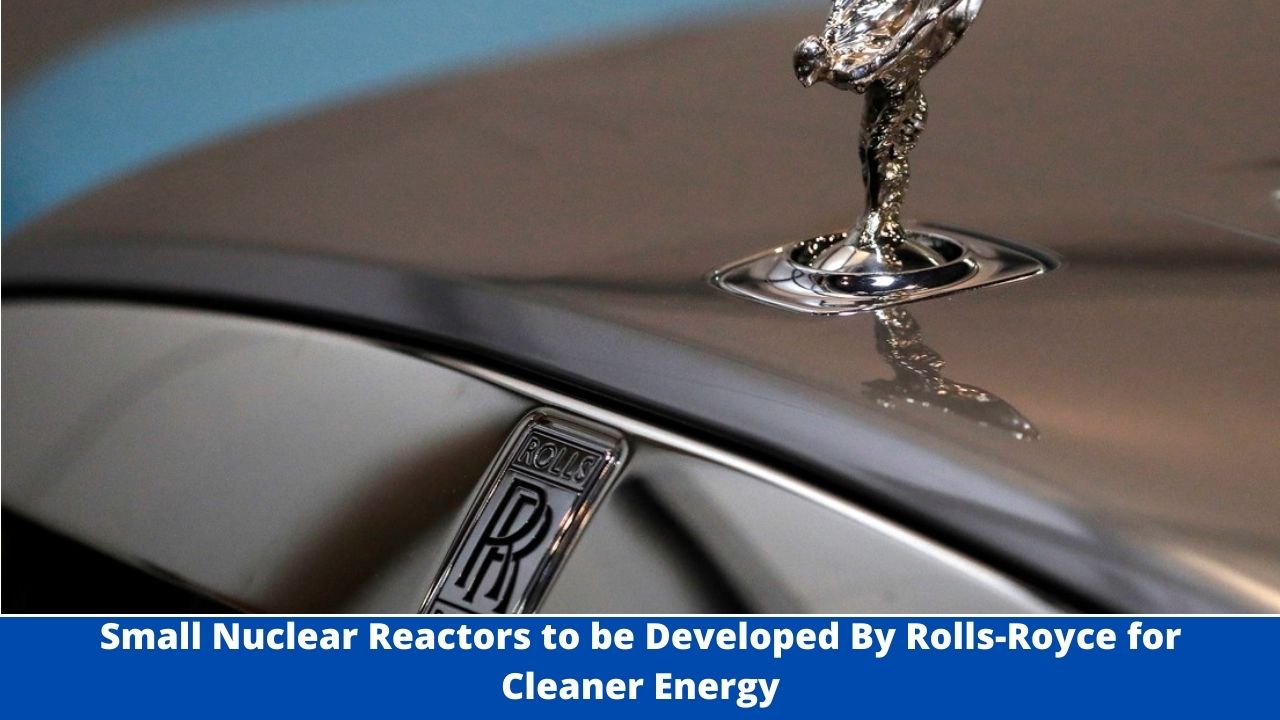To generate cleaner energy, Rolls-Royce is developing a small nuclear reactors backed by private investors and the UK government.
A small modular reactor is a nuclear fission reactor, but it is smaller than a conventional reactor.
Rolls-Royce announced the creation of a small modular reactor business after receiving a £210m government grant and a £195m loan from private companies.
As part of this investment, Rolls-Royce Group, BNF Resources, Exelon Generation, and the government will collaborate on the development of SMR design by Rolls-Royce.
On the other hand, critics said that renewable energy should be the priority, not nuclear power.
At present, nuclear power generates 16 percent of the UK’s electricity.
Regulatory processes will to determine if the new creation is suitable for deployment in the UK.
The venture must identify the factories that will manufacture the reactor’s parts and receive most of its investment.
After the announcement, Rolls-Royce’s share price increased by 4.2% to 147.85p per share.
A Deeper Commitment To Clean Energy
According to Rolls-Royce SMR, one of its power stations could power approximately one million homes and occupy about a tenth of the space of a conventional nuclear plant.
However, in addition to being able to generate 470MW of power, the plant will produce about the same amount of power as 150 onshore wind turbines.
Rolls-Royce CEO Warren East said its SMR technology provides a “clean energy solution” that can help mitigate climate change.
Energy and Business Minister Kwasi Kwarteng also said SMRs provided opportunities to “cut costs and build more quickly, ensuring we can bring clean electricity to people’s homes and cut our already-dwindling use of volatile fossil fuels even further”.
“This is a once in a lifetime opportunity for the UK to deploy more low carbon energy than ever before and ensure greater energy independence”, he added.
SMR: Small-sized and Cost Effective
A smaller SMR is expected to cost less to build than a traditional nuclear power plant due to its smaller size.
Considering the nature of Rolls-Royce’s reactors, parts are believed can be manufactured at factories and then transported by road, thus saving time and money during construction.
Typically, SMRs will cost about £2 billion each, whereas a larger plant at Hinkley Point and, ‘the yet unapproved’ sister plant at Sizewell in Suffolk both cost £20 billion each.
If approved by the UK Government, Rolls-Royce is believed to be capable of building up to 16 reactors throughout the UK to generate electricity.
The company’s CEO, Tom Samson, said its mission is to “deliver a low cost, deployable, scalable and investable programme of new nuclear power plants”.
“Our transformative approach to delivering nuclear power, based on predictable factory-built components, is unique and the nuclear technology is proven,” he added.
How Does Net Zero Work?
The UK had previously set out plans to reduce greenhouse gases to zero.
Nonetheless, Paul Dorfman, chairman of the Nuclear Consulting Group, said that nuclear power spending might take away funding for other types of energy.
“If nuclear eats all the pies which it is looking to be doing… we won’t have enough money to do the kind of things we need to do which we know practically and technologically we can do now,” he said.
SMR technology is still more expensive than renewable technologies, according to Dr. Doug Parr, Greenpeace’s chief scientist, who added that there is “still no solution to dispose of the radioactive waste they leave behind and no consensus on where they should be located”.
“What’s worse, there’s not even a prototype in prospect anytime soon,” he added.
“The immediate deadline for action is sharp cuts in emissions by 2030, and small reactors will have no role in that.”
Michael Childs, head of policy at Friends of the Earth, said government support should be “aimed at developing the UK’s substantial renewable resources, such as offshore wind, tidal and solar, and boosting measures to help householders cut energy waste.”
As part of a ’10-point plan’ to achieve net-zero greenhouse gas emissions by 2050, the government has explained that nuclear power is a “reliable source of low-carbon electricity” and that it is “pursuing large-scale nuclear”, as well as investing in SMRs.
Confederation of British Industry chief Tony Danker called the Rolls-Royce investment a “hugely promising milestone for a technology that can not only boost the economy but help deliver a greener and more secure energy system overall.”
Meanwhile, Tom Greatrex, chief executive of the Nuclear Industry Association, added the funding sent a “huge signal to private investors that the government wants SMRs alongside new large-scale stations to hit net-zero.”
For more news and information follow our website TheEastCountyGazette.com.

